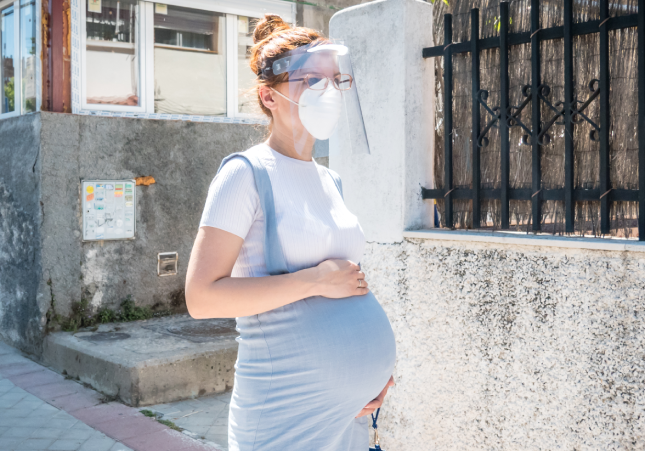-
Covid-19 // Dot-Mom // Reading Radar
COVID-19’s Pregnancy Paradox: Greater Disease Risk but Lower Vaccine Priority
March 10, 2021 By Sara Matthews
“Greater attention to pregnant patients as a unique population at higher risk of SARS-CoV-2 infection sequelae, is critical to preventing maternal and neonatal morbidity and mortality,” write the authors of a study in the American Journal of Obstetrics and Gynecology examining morbidity and mortality among pregnant women with COVID-19 in Washington state. The study found “markedly higher” hospitalization and fatality rates among this group compared with similarly-aged non-pregnant individuals.
The authors obtained medical records from 35 hospitals in Washington State, capturing 61 percent of annual deliveries in the state. Within their data set, they identified 240 pregnant individuals who had a confirmed SARS-CoV-2 infection and calculated hospitalization and case fatality rates for this group. They then compared these statistics to statewide hospitalization and case fatality rates.
The results are stark. The pregnant women in their study had a COVID-19-associated hospitalization rate that was 3.5 times higher compared to similarly-aged adults in the state. The COVID-19 case fatality rate was 13.6 times higher. They also found a link between disease severity and increased risk of preterm birth. Not all populations bore this increased risk equally. Case rates among pregnant women of color were two to four times higher than expected based on the race-ethnicity distribution of pregnant women in Washington. This data “strongly supports” the need to prioritize pregnant women in vaccine distribution, write the authors.
Unfortunately, this recommendation is not being put into practice. Another study also published by the American Journal of Obstetrics and Gynecology found that pregnant people have been largely excluded from priority groups in COVID-19 vaccine distribution plans. The study analyzed the vaccination plans in all 50 states and the District of Columbia. Only 15 state plans include pregnant people in phase 1 priority groupings. 36 states—home to 71 percent of the U.S. population—do not, including the state of Washington. This is in “stark contrast” to federal guidelines directing states to prioritize pregnant individuals (and others with high-risk health conditions) in vaccine distribution. This departure will have dire consequences, unnecessarily increasing adverse outcomes for pregnant individuals, write the authors. It is paramount that states revise their vaccination plans to include pregnant individuals or, if necessary, that the federal government mandate their inclusion.
The exclusion of pregnant individuals from COVID-19 response efforts is not unexpected. It is the result of institutional processes that have excluded them from medical research for decades due to concerns of harming the mother or fetus. Now, researchers and advocates are calling for a change in practice, one that shifts from protecting pregnant individuals from research to protecting them through research. This shift will allow specific needs to be understood and addressed by policymakers. “When the data is woefully incomplete for specific groups, like pregnant women, it is easy to assume that they haven’t been impacted by the pandemic,” said Dr. Kristina Adams Waldorf, Senior Author of the Washington State study. “This was not the case.”
These studies provide important guidance on how to make COVID-19 response efforts more effective. Their implications are not limited to the current pandemic, however. It is also critical that we learn from this experience and use this data to be better prepared for the next pandemic. We can no longer “brush pregnant women to the side” in vaccination efforts, said Adams Waldorf. “The time to act is now.”
Read more:
- What will it take to develop and distribute a safe, effective COVID-19 vaccine?
- The global call to protect and prioritize midwifery care during COVID-19.
- The importance of including maternal mental health in COVID-19 responses.
- COVID-19 and the effects of increased housing insecurity on pregnant women.
- The role of race, bias, and equity in prenatal care.
Sources: American Journal of Obstetrics and Gynecology, National Public Radio, News Medical
Photo Credit: A pregnant woman with a mask walking on the street in Madrid during the COVID-19 pandemic. JoeLogan/Shutterstock.com, All Rights Reserved.
 A Publication of the Stimson Center.
A Publication of the Stimson Center.



